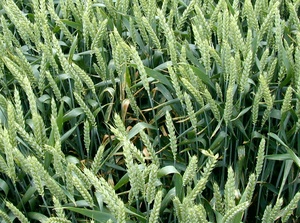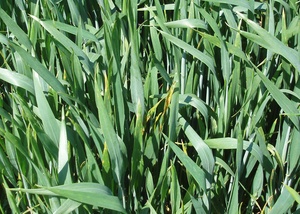Cases of Septoria disease with unusually short latent periods and the ability to go through the infection cycle quicker than normal, have been found in winter wheat in East Anglia, says NIAB TAG.
“I’ve now seen several cases of Septoria tritici on Leaf 2 where the winter wheat crop was only just at GS39. This shouldn’t be ‘biologically’ possible because Leaf 2 hasn’t been out long enough to become infected, go though a normal latent period, and then show symptoms,” explains Bill Clark, NIAB TAG’s Commercial Director.
“If this turns out to be a ‘faster’ Septoria tritici it will make the timing of disease control programmes much more difficult. It will almost certainly mean an additional fungicide treatment between the normal T1 spray and the flag leaf treatment (T2) – which is what many people have had to do this year because of the weather,” he advises.
NIAB TAG is examining these strains of Septoria to see if they have unusually short latent periods and will explore the implications for future fungicide programmes.
Normally Septoria tritici needs about 220 day degrees from infection to symptoms showing. It is the thermal time that is important, rather than the number of days. Once infection has occurred the disease develops quicker in high temperatures and slower in low temperatures.
“The average daily temperature in May was around 10oC, so it would normally take 22 days, or three weeks, between infection and symptoms showing. In the recent cases I’ve seen of severe Septoria on Leaf 2 it’s difficult to believe that the leaf had been out long enough to become infected and then show symptoms before the flag leaf spray was applied. These cases are also in crops that have had very robust fungicide programmes,” says Mr Clark.
In those cases seen by Mr Clark the Leaf 2 symptoms were on the top half of the leaf indicating that the leaf was infected as it was emerging (GS33) but before the leaf was fully emerged. He believes that even with this additional factor it is still difficult to imagine even the top half of the leaf would be out long enough for symptoms to show before the flag leaf is fully out.
Mr Clark has also seen patches of Septoria tritici rather than the usual even spread across an entire field, and warns growers to look out for odd areas of disease when checking their crops.
“We saw similar cases of Septoria tritici foci in fields in 2003 and thought there might be some strains that had shorter latent periods, i.e. they could go through their infection cycle much quicker, keeping up with leaf emergence and infecting each new leaf as it emerged. This is much more like Septoria nodorum and Tan Spot where sprays have to go on more frequently to keep up with disease progress,” says Mr Clark.
